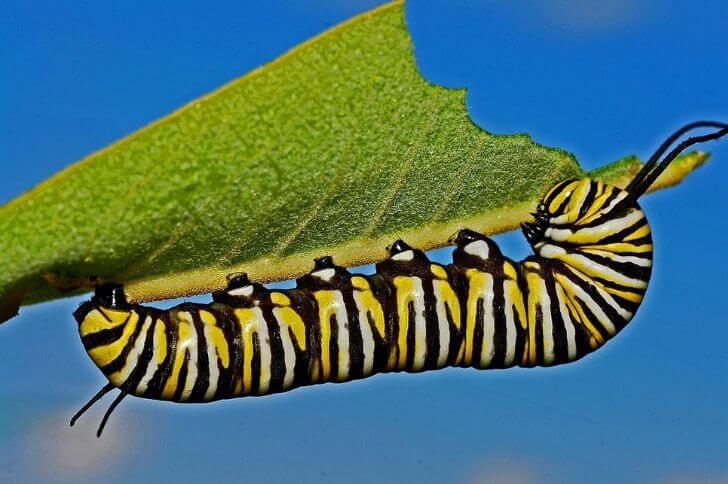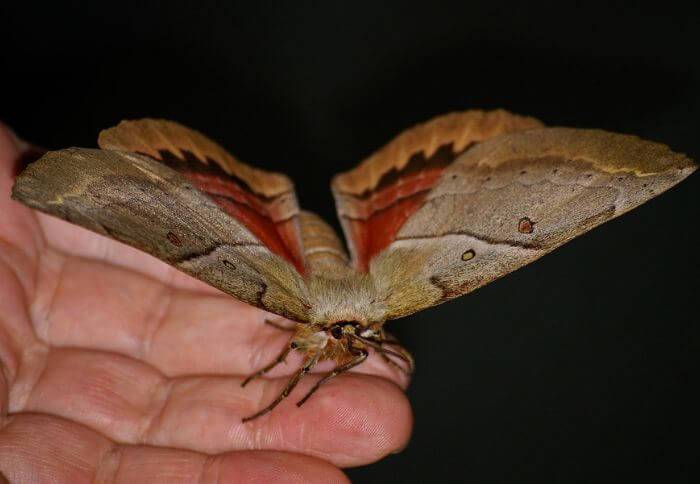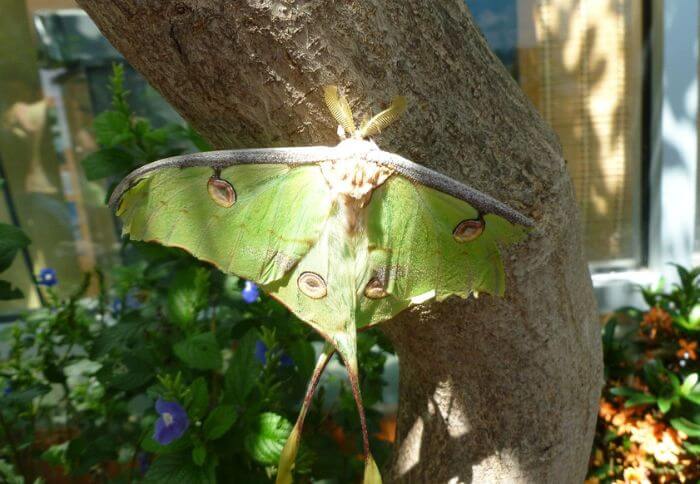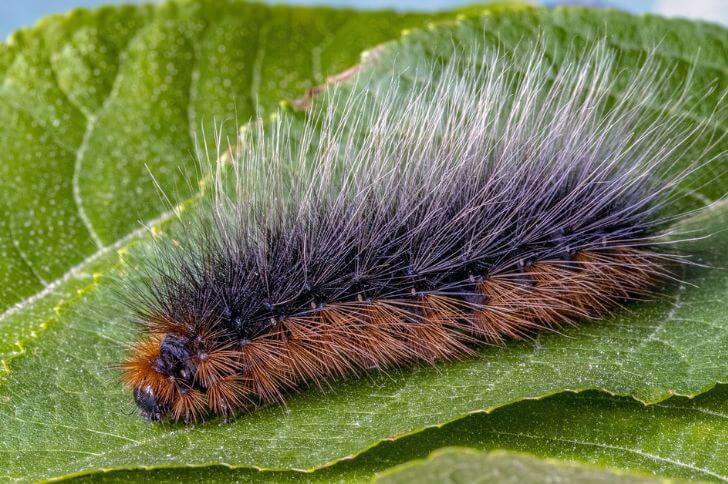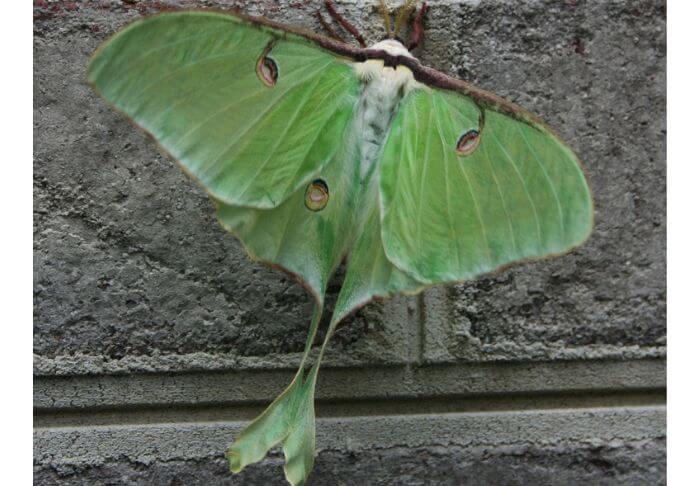17 Small Green Caterpillars (1 is Venomous)
Caterpillars have long been fascinating creatures, with their remarkable transformation from tiny larvae into beautiful butterflies or moths. Among the countless species of caterpillars that exist, there are those small green ones that catch our attention with their vibrant color and peculiar habits.
These miniature marvels can be found in various habitats around the world, each displaying unique characteristics and adaptations.
In this article, we will explore some of the most intriguing types of small green caterpillars, shedding light on their appearance, behavior, and ecological significance. So put on your entomologist hat and get ready to delve into the captivating world of these little green wonders!
List of Small Green Caterpillars
1. Saddleback Caterpillar
The saddleback caterpillar may be small, but it certainly knows how to make a big impression. With its vibrant green color and striking markings, it stands out among other caterpillars in the animal kingdom.
However, don’t let its charming appearance fool you – this little creature packs a powerful punch. Its spines are not just for show; they are actually venomous and can cause intense pain if touched.
While the saddleback caterpillar’s venom is certainly notable, there is more to this intriguing insect than meets the eye. It has developed a clever defense mechanism to protect itself from predators – disguising itself as bird droppings!
By adopting this rather unappealing disguise, it manages to avoid being eaten by birds who would otherwise mistake it for an unsavory snack. This adaptation showcases the incredible ingenuity of nature and reminds us that even the smallest creatures can find innovative ways to survive in their environment.
2. Crowned Slug Moth
One small green caterpillar that stands out amongst the rest is the crowned slug moth. While its vibrant green coloring may seem unassuming, a closer look reveals an intricate pattern of tiny spines covering its body.
These spines not only provide protection against predators but also serve as sensory organs, allowing the caterpillar to detect changes in its environment.
However, it is not just the appearance of the crowned slug moth that captivates attention. When threatened, this remarkable creature has a unique defense mechanism – it retracts its head and rear end inward, forming what resembles a crown on both ends.
This adaptation not only deters potential attackers but also gives rise to its intriguing name. It goes to show that even in the world of small green caterpillars, there are hidden marvels waiting to be discovered.
The crowned slug moth undergoes metamorphosis like other caterpillars and eventually transforms into a beautiful adult moth.
However, it is during its larval stage that this creature truly shines with its striking features and fascinating behavior. The presence of these extraordinary insects reminds us that even in the smallest and most ordinary organisms, there are wonders awaiting our appreciation and understanding.
3. Red Helen Swallowtail Caterpillar
The Red Helen Swallowtail caterpillar is a sight to behold with its striking colors and unique markings. This small green caterpillar transforms into a stunning butterfly, making it a fascinating subject for nature enthusiasts.
What sets this species apart is its ability to mimic bird droppings as a form of defense against predators. This clever adaptation not only helps them blend in with their surroundings but also makes them unappealing to potential threats.
As they mature, these caterpillars undergo several molts, shedding their old skin and emerging with brighter colors and patterns each time.
These transformations serve as a metaphor for personal growth, reminding us that change is not always easy but often necessary for development. Additionally, the Red Helen Swallowtail demonstrates the power of perception – what may appear insignificant at first glance can actually be an extraordinary creature in disguise.
Attracting attention wherever they go, these tiny creatures captivate observers with their intricate details and organic beauty. They remind us that even within the smallest organisms lies immense potential for growth and transformation.
The Red Helen Swallowtail caterpillar serves as an enchanting example of nature’s endless wonders, urging us to appreciate the hidden magnificence that surrounds us every day.
4. Imported Cabbage Butterfly Caterpillar
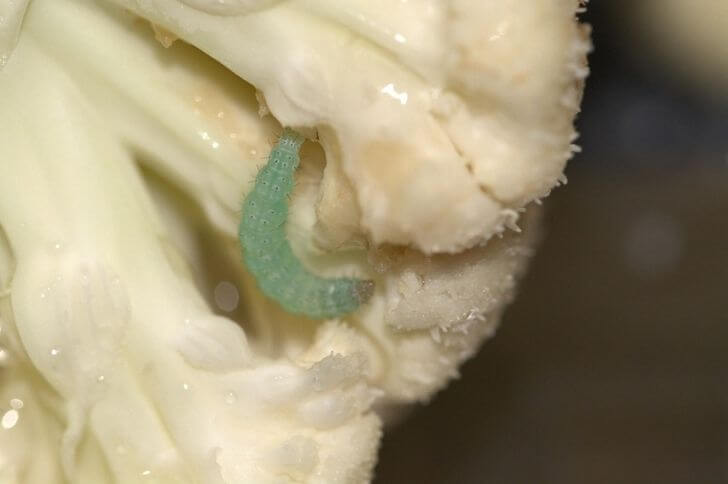
The imported cabbage butterfly caterpillar, also known as the Pieris rapae, may seem harmless in its small size and bright green color, but don’t be fooled by appearances. These little critters are voracious eaters and can cause significant damage to your garden if left unchecked.
They are particularly fond of cabbage plants and can quickly consume their leaves, leaving behind a bare skeleton.
But what makes these caterpillars interesting is their incredible adaptability. They have been successful invaders in many parts of the world because they can rapidly adjust to new environments and exploit different host plants for food.
This flexibility allows them to survive in a wide range of conditions, making them a formidable adversary for gardeners everywhere.
So how do you deal with this miniature menace? Well, prevention is key. By implementing proper gardening practices such as crop rotation and regular monitoring for signs of infestation, you can significantly reduce the chances of your vegetables falling victim to these hungry caterpillars.
Additionally, introducing natural predators like birds or wasps that feed on butterfly larvae can help keep their populations under control without resorting to harmful pesticides.
5. Dragon-Headed Caterpillar
One small green caterpillar that captures attention with its unique appearance is the Dragon-Headed Caterpillar.
Unlike its fellow caterpillars, this enchanting creature has an elaborate pattern of black and yellow stripes running along its body, resembling a fearsome dragon in miniature form. Its head features two distinct horns, giving it an extra touch of allure.
In addition to its mesmerizing appearance, the Dragon-Headed Caterpillar boasts an intriguing behavior that sets it apart from other species.
When feeling threatened or startled, this remarkable caterpillar has the ability to puff out two antennae-like structures at its head, mimicking a serpent’s tongue. This sudden transformation can startle predators and deter them from their meddling intentions.
Whether you spot one perched on a leaf or inching across your garden, encountering a Dragon-Headed Caterpillar is nothing short of magical.
Its striking appearance and deceptive tactics make it an extraordinary addition to the world of small green caterpillars, reminding us just how fascinating nature truly is.
6. Cabbage Looper Moth caterpillar
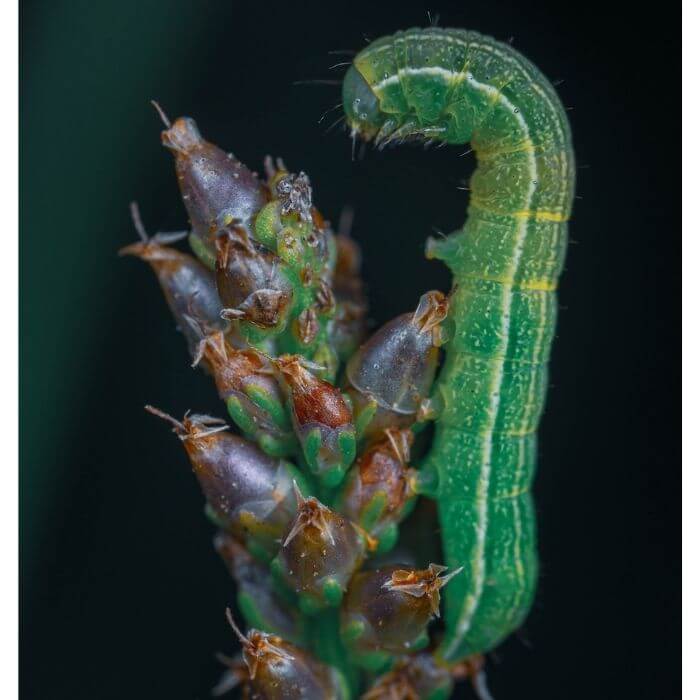
The Cabbage Looper Moth caterpillar may be small in size, but it certainly makes its presence known in gardens and agricultural fields.
This voracious feeder can strip a cabbage plant of all its leaves within days, leaving behind a devastation that farmers and gardeners dread. What sets the Cabbage Looper Moth caterpillar apart from other green caterpillars is its distinctive looping movement, which gives rise to its name.
As it crawls along, inching forward with one segment of its body while arching the segments behind it, it creates a mesmerizing pattern that catches the eye. But don’t let this graceful dance fool you – these little creatures are tough competitors when it comes to finding food.
The life cycle of the Cabbage Looper Moth caterpillar begins when an adult moth lays her eggs on the undersides of leaves. Once hatched, these tiny green creatures start their feeding frenzy immediately.
They have strong mandibles, capable of chomping through even the toughest plant tissues with ease. What’s fascinating about them is their ability to blend seamlessly into their surroundings due to their coloration and mimicking behavior. They not only resemble leaves but also sway back and forth like foliage in the wind when disturbed, making detection by predators challenging.
Despite being a nuisance for farmers and gardeners, there is something awe-inspiring about watching these little green creatures create their own path through nature’s bounty.
7. Diamond-back Cabbage Moth caterpillar
The Diamond-back Cabbage Moth caterpillar may be small, but it packs quite a punch. This tiny green creature is known for wreaking havoc on cabbage plants, leaving farmers across the world frustrated and perplexed.
With its distinctive diamond-shaped markings and voracious appetite, this caterpillar can quickly devastate entire crops if left unchecked.
What sets the Diamond-back Cabbage Moth caterpillar apart from other pests is its ability to adapt and survive. This little green menace has become resistant to a wide range of chemical pesticides, making it a formidable opponent for farmers everywhere.
As they munch their way through cabbage leaves with lightning speed, they leave behind countless gnawed edges as evidence of their presence.
However, despite their destructive nature, these caterpillars are not without their own fascinating story. They are actually part of a larger ecological web that includes predatory insects and other natural enemies.
Some parasitic wasps lay eggs in the Diamond-back Cabbage Moth caterpillar’s body, ultimately killing it from the inside out. This delicate balance between predator and prey highlights the intricate dance of survival that takes place within our natural ecosystems.
8. Small White Butterfly caterpillar
The small white butterfly caterpillar may have a plain name, but its story is anything but ordinary. This tiny creature starts its life as an inconspicuous egg, carefully laid on the underside of a leaf by an adult butterfly.
Once hatched, the caterpillar embarks on a journey of growth and transformation that will eventually lead to its stunning metamorphosis.
What sets this caterpillar apart is not just its striking appearance, with velvety white skin adorned with intricate black markings. It’s also their fascinating behavior that captures the attention of nature enthusiasts.
Unlike many other caterpillars that feed on specific plants, the small white butterfly caterpillar has a more diverse diet. They show a remarkable adaptability in their food choices, happily munching away on a variety of leaves found in their environment.
But perhaps most intriguingly, these caterpillars have evolved an intriguing defense mechanism against predators.
When threatened or disturbed, they are known to suddenly release colorful droplets from glands behind their heads. These droplets contain toxins that serve as potent chemical deterrents against potential attackers – making them far less appetizing than they initially appear.
If you’ve ever encountered one of these small white butterfly caterpillars in your garden or local park, take a moment to observe them closely.
Their seemingly simple presence belies a world full of wonders waiting to be discovered: the power of adaptation and resilience in the face of adversity.
9. Small Blue Butterfly Caterpillar
The sight of a small blue butterfly caterpillar is enough to make anyone stop and marvel at nature’s brilliance.
These tiny creatures, with their vibrant azure hue, are a true wonder to behold. But what makes them even more captivating is the journey they undergo before transforming into magnificent butterflies.
As these caterpillars munch on leaves, their bodies slowly begin to change and adapt. They shed their skin multiple times as they grow, revealing brighter shades of blue with each molt.
This unique coloration serves as a defense mechanism, warning predators that they are toxic or distasteful. It’s fascinating how nature equips these delicate creatures with such powerful means of survival.
Observing the life cycle of these small blue butterfly caterpillars not only teaches us about their incredible resilience but also highlights the interconnectedness of all living things in our ecosystem.
These little creatures have an important role in pollination and contributing to biodiversity.
10. Eastern Tailed Blue Caterpillar
In the world of caterpillars, there is a tiny creature that often goes unnoticed: the Eastern Tailed Blue caterpillar.
With its vibrant green body adorned with subtle intricate patterns, this diminutive insect hides a secret weapon to navigate its environment – two delicate tails at its rear end. These tailed appendages serve both as a means of protection and as an aid in fending off predators.
Unlike other species, the Eastern Tailed Blue caterpillar does not rely solely on camouflage for survival. Its tails mimic antennae, confusing potential attackers by creating the illusion that the head is located at the opposite end of its body.
This evolutionary adaptation gives the caterpillar an advantage when it comes to avoiding predation and increasing its chances of transforming into a beautiful adult butterfly.
Aside from their clever defense mechanisms, these small green caterpillars possess an exceptional ability to adapt to their surroundings. As they munch away on various types of grasses and leguminous plants, their green coloration helps them blend seamlessly into leafy foliage and avoid detection by hungry birds or other predators lurking nearby.
Observing these miraculous insects reminds us that even creatures we may overlook can hold remarkable secrets within their tiny bodies – just waiting to be discovered by those willing to take a closer look.
11. Green Cloverworm Caterpillar
Hiding amongst the lush green foliage, the Green cloverworm caterpillar might easily be dismissed as just another ordinary insect.
This little creature plays a vital role in our ecosystems and has some fascinating secrets to share.
One of the most intriguing aspects of the Green cloverworm caterpillar is its feeding habits. Unlike other caterpillars that munch on leaves indiscriminately, this species has a particular taste for legumes.
As it chomps away at soybeans, alfalfa, and other leguminous plants, it releases chemicals that actually benefit these crops by deterring other pests. In a remarkable symbiotic relationship, both the caterpillar and the plants directly benefit from each other’s presence.
But that’s not all – this tiny marvel also knows how to protect itself from predators with extraordinary finesse. When threatened, it instantly tenses up and drops off its perch onto the ground below.
It then wriggles like a snake, confusing would-be attackers with its clever mimicry skills. This natural defense mechanism is highly effective against birds and other insectivores who may mistake it for something altogether less tasty or more dangerous.
12. Angle Shades Caterpillar
The angle shades caterpillar, also known as the Lime Swallowtail Caterpillar, is a small but mesmerizing creature that can be found in many gardens across North America.
What makes this caterpillar so unique is its vibrant green color and intricate patterns which resemble delicate angel wings. As it feeds on plants such as citrus trees and milkweed, it slowly transforms into a stunning lime-green chrysalis before emerging as a graceful Swallowtail butterfly.
But there’s more to the caterpillar than just its striking appearance. This tiny creature plays an important role in the ecosystem as it helps pollinate flowers while going about its munching journey.
Its presence in our gardens reminds us of the interconnectedness of nature and the beauty that can be found even in the smallest of creatures.
13. Winter Moth Caterpillar
Winter moth caterpillars, with their bright green bodies and tiny size, may seem insignificant at first glance. However, these seemingly harmless creatures can wreak havoc on trees and plants during the winter months.
They are known to defoliate entire forests, leaving behind a barren landscape that can take years to recover from. Despite their small size, each winter moth caterpillar has an insatiable appetite and can eat up to 10 times its weight in leaves.
One fascinating aspect of the winter moth caterpillar is its ability to survive in harsh conditions. While other insects go dormant or hibernate during the cold months, these industrious caterpillars continue to feed relentlessly.
They have developed a special antifreeze protein in their cells which prevents them from freezing solid in low temperatures. This remarkable adaptation allows them to thrive even when most other creatures struggle for survival.
Not only is the winter moth caterpillar destructive and resilient, but it also plays a vital role in the ecosystem. Their feeding habits may temporarily alter landscapes but they also provide food for numerous birds and mammals during an otherwise sparse time of year.
Additionally, they help regulate tree populations by controlling growth and encouraging diversity within forests. Despite the damage they can cause, there is an intricate balance at play that highlights nature’s complexity and interconnectedness.
14. Oak Slug Moth Caterpillar
The Oak slug moth caterpillar is a small yet fascinating creature that can be found in many forests around the world. Despite its unassuming appearance, this caterpillar packs a punch with its unique defense mechanisms.
When threatened, it has the ability to release a sticky and irritating substance from its body, deterring predators and ensuring its own safety. This slimy secretion not only serves as protection but also allows the caterpillar to easily slide off of leaves and branches when necessary.
In addition to its self-defense skills, the Oak slug moth caterpillar is also known for its intriguing coloration.
With shades of green ranging from lime to mint, this tiny creature perfectly blends in with its leafy surroundings.
Its camouflage helps it avoid detection by hungry birds or other insect predators looking for an easy meal. It’s amazing how nature has equipped this little caterpillar with such clever tactics for survival.
15. Spicebush Swallowtail Caterpillar
The Spicebush Swallowtail Caterpillar is a small marvel of nature, with its vivid green color and striking patterns. This caterpillar can be found feasting on the leaves of spicebush plants, hence its name.
What sets this species apart is its ability to blend in seamlessly with the surrounding foliage. Its unique camouflage helps protect it from predators, making it harder to spot among the greenery.
As fascinating as their appearance may be, Spicebush Swallowtail Caterpillars also have a captivating life cycle. After hatching from a tiny egg, they go through several instar stages, molting their old skin as they grow bigger.
Each instar reveals a slightly different color pattern until they reach their last larval stage and prepare for pupation. Witnessing these transformations can feel like watching nature’s very own magic show.
Moreover, what makes the Spicebush Swallowtail Caterpillar even more intriguing is its relationship with other organisms in its environment.
While it mainly feeds on spicebush plants, this caterpillar has also been known to munch on related species such as sassafras or tulip trees. This flexibility in diet adds another layer of complexity to their already remarkable existence.
16. Rough Prominent Moth Caterpillar
The Rough Prominent Moth Caterpillar is a fascinating creature that can be found in various regions across North America.
This small green caterpillar stands out with its unique appearance and distinctive spikes adorning its body. These spikes serve as a means of defense, deterring potential predators from attacking.
What makes the Rough Prominent Moth Caterpillar even more intriguing is its ability to blend seamlessly with its environment.
Its green coloration allows it to camouflage effortlessly among leaves, making it difficult for both predators and humans to spot. This caterpillar demonstrates nature’s remarkable ability to provide adaptive mechanisms that ensure survival.
17. Black Swallowtail Butterfly Caterpillar

The Black Swallowtail Butterfly Caterpillar is a fascinating creature that undergoes a remarkable transformation. With their vibrant green bodies and striking yellow stripes, these caterpillars are not only visually stunning, but also play a crucial role in the ecosystem.
As herbivores, they feed on various plants including dill, fennel, and parsley. While it may seem concerning to see these little critters munching away at your garden, it’s important to remember that they are an essential part of the food chain and provide nourishment for other organisms.
What sets the Black Swallowtail Butterfly Caterpillar apart from its peers is its ability to camouflage itself when threatened by predators.
When disturbed or frightened, these caterpillars can retract their heads into their body and remain motionless for long periods of time.
This behavior not only helps them blend in with their surroundings but also gives the illusion of being a small branch or leaf. It’s nature’s way of creating an ingenious defense mechanism that keeps them safe from harm.
As they grow bigger and stronger, Black Swallowtail Butterfly Caterpillars shed their skin multiple times during the larval stage – a process known as molting.
This allows them to accommodate their expanding bodies as they consume more food. Molting is not only vital for their growth but also serves as a means of protection since shedding old skin removes any parasites or diseases attached to it.
Final thoughts on small green caterpillars
Small green caterpillars come in a variety of types and can be found in various environments. Some of the most common types include the cabbage looper, the armyworm, and the diamondback moth larvae.
Each type has its own distinct characteristics and feeding habits. It is important for gardeners and farmers to be aware of these caterpillars in order to protect their plants and crops.
By identifying the different types and understanding their behavior, appropriate measures can be taken to control their populations effectively. Therefore, it is crucial for individuals to stay informed and seek professional advice if necessary when dealing with small green caterpillars in their surroundings.
source:
cabbage looper moth caterpillar

Passionate animal enthusiast and skilled writer with a flair for captivating storytelling. With over five years of experience, I have crafted engaging content that sheds light on the fascinating world of animals.
Through my articles, blog posts, and social media campaigns, I strive to raise awareness about conservation efforts and promote a deeper understanding of the natural world.

